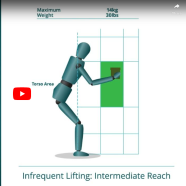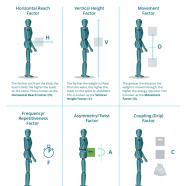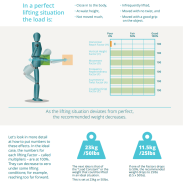Resource Library
Search
Search for keywords that are related to what you're looking for to get the best results (ex. construction). Use filters to refine your search.
Image

To help workplaces design and assess lifting and lowering tasks, the American Conference of Governmental Industrial Hygienists, or ACGIH for short, developed an assessment tool. The tool is called…
Image

The National Institute of Occupational Safety and Health (NIOSH) Lifting EquationThe National Institute for Occupational Safety and Health (NIOSH) in the USA identified factors that affected the amount…
Image

Recommended Weight for lifting and lowering: The NIOSH* Lifting Equation*National Institute of Occupational Safety and Health (USA)The National Institute for Occupational Safety and Health (NIOSH) in…
Image

The National Institute for Occupational Safety and Health (NIOSH) in the USA identified factors that affected the amount of weight that could be safely lifted. It was created to help workplaces…
Image
Risk assessment checklist that considers grip force, manual material handling (MMH) tasks, awkward postures, static postures, repetition, impacts, and vibration.
Hyperlink; Assessment–A series of tables with recommended weight limits for lifting tasks given worker sex, object depth, lifting distance, lifting frequency, and lift asymmetry. The data are derived…
Hyperlink; Assessment–A general assessment of hand and wrist MSDs based on hand effort and activity. Numbers are simple to estimate and compute, and can be compared to two established reference…
